Everything You Need to Know About Releasing a Song: From Inspiration to Distribution
Quick Answer:
Releasing a song is no easy task. For many the thought of having to plan a complex release for a song, EP, or album is overwhelming.
That's why it's important to understand everything that goes into creating and releasing a project, prior to diving in.
A song starts with inspiration and writing, then a demo should be produced, followed by tracking, editing, mixing, mastering, promotion of the project, distribution and release, and lastly fan reception. Understanding all of these aspects in detail is crucial to planning and coordinating a successful release.
Let's take a look at these steps in list form, just to make things simpler.
1. Inspiration / Initial Writing
2. Demo Production / Rehearsal
3. Tracking
4. Editing
5. Mixing
6. Mastering
7. Promotion
8. Distribution
9. Fan Reception
These steps are complex in their own right, as they each offer multiple opportunities for creative expression.
Everything You Need to Know About Releasing a Song in Detail:
The fact that labels aren’t as prominent as they used to be is fantastic.
If you wanted to be a recording artist 30 years ago you needed to find a label that could offer the money for recording, packaging and distribution.
As a result you’d loose the majority of your songwriting and publishing rights.
This became even worse in the early 2000’s with ‘360 deals.’ In order to sign with a label to get your music released, they’d also take some of your merchandise sales, sync rights, and even go as far as take a cut of anything you’d earn from public appearances.
Today, you can write a song, record it yourself, and then distribute it online all within one day. You’ll retain all of your rights, while keeping costs to a minimum.

Although this possibility is incredibly exciting for any artist, it’s not without it’s problems and anxieties.
What used to be the job of 10’s or even 100’s of people, may now be falling on your shoulders.
You may be asking yourself, how do I do all of this? How do I even begin to understand and execute all the necessary steps to release my music?
If you’re curious about how to take a song from the very start, through the recording process, and then release it successfully, follow along as we detail each step in the song making process.
Writing and Inspiration:
This may be the most intimidating part of the entire song making process. Due to its perceived difficulty, a lot of people never make it past this first step.

But if you have a piano, or guitar, or any instrument with which you can write chords, you’re well on your way to making a song.
In its simplest form, a song can be stripped down to:
1. Chords and Chord Structure
2. Lyrics
3. A Melody for Those Lyrics
If you can complete those simple steps you’ve pretty much got a song.
Write a verse, and a chorus, maybe a bridge for good measure, then organize those parts into something that sounds enjoyable. Congrats you have a song.
If this is the first song you’ve written, don’t be discouraged if it isn’t amazing. Writing catchy or significant songs takes time. Just keep refining the process until you find what works for you.

If you’re struggling to find inspiration for your lyrics never hesitate to borrow from some of your favorite movies, books, even video games.

Morrissey of the Smiths often borrowed lines from some of his favorite movies and literature, and is considered one of the best frontmen of his era.

Keep this in mind when writing - there is plenty of amazing art that is almost instantly available to you. You can always draw inspiration from any of it.
Demo Production & Rehearsal:
Roughly 20 years ago you needed a band if you wanted to hear your song with added instrumentation. This of course would take a great deal of time, and if you were hiring the musicians, a fair amount of money.

Today, you can easily layer multiple instruments in a DAW on your computer. If you’re wondering which free DAWs you can download to get started, here is a brief list.
1. ProTools First

2. Garageband

If you’re looking for a DAW that offers more traditional engineering functions, ProTools First is a great option.
If you need a DAW that can help provide you with instrument samples, drum machines and easy to use effects, GarageBand is your best bet.

Keep in mind that GarageBand only works on Mac products, whereas Pro Tools is compatible with both Mac and PC operating systems.
If you prefer the more traditional approach, find a few people you enjoy playing music with, and begin rehearsing. The more you rehearse, and know the composition of your song, the better your chances are of having a successful recording session when the time comes.
Although you may be more inclined to work with a band than to layer the multiple instruments in a DAW, you should still create a demo before any professional recording process.
This way you know the composition of your song, and can more easily come up with additional ideas in the studio.
If your genre is more aligned with EDM or making beats, then this demo process may actually be your recording process. If you have no need for live instrumentation, then refining your demo until you get it exactly right will most likely take the place of a traditional recording experience. With that in mind it is still important to have a proper mixing, mastering and distribution process.
Tracking:
Tracking in a legitimate recording studio is truly important to shaping a professional sound.

If you want to take your recordings to the next level, you really can’t beat recording music in a room designed for balanced reverberation and reflections.
![]()
This of course isn’t to discourage anyone. If you intend to track your record in your bedroom, by all means go for it. You can still achieve amazing sounds, even if you aren’t in a professional studio.

For example, Billie Eilish released ‘When We All Fall Asleep, Where Do We Go?” to great critical and commercial acclaim. The album was recorded in her brother’s bedroom.
This goes to show that if you have the production knowledge, the right equipment, an acoustically treated room, and a great performance, you can still achieve amazing recordings at home.
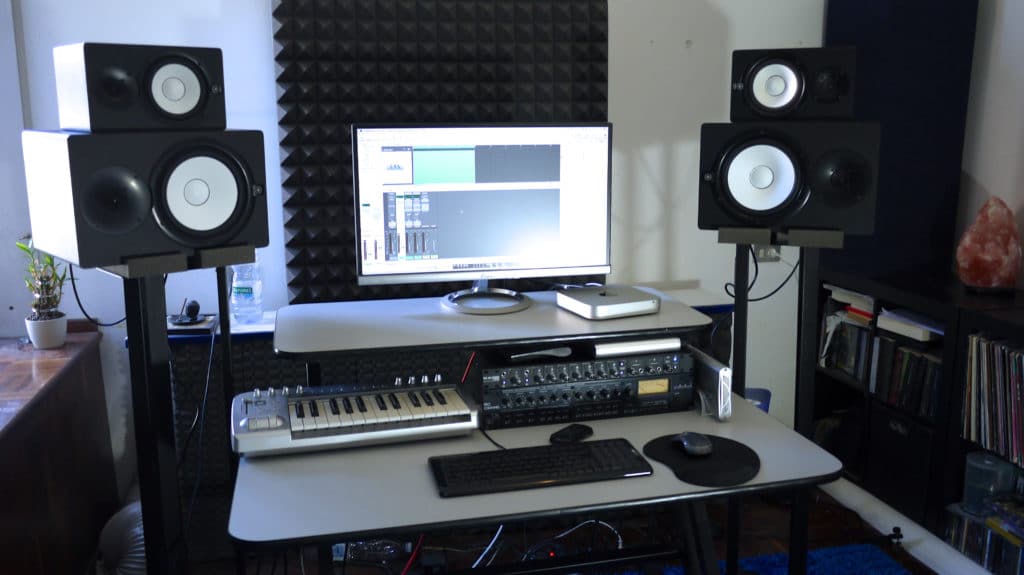
That being said, purchasing all the equipment and sound treatment needed from this type of recording can become expensive pretty quickly, especially when you factor in the computer needed to make this happen.
Getting gear on a budget is of course possible, but if you do decide to go the home studio route, perhaps consider it an investment, and plan how you intend to recoup at least a portion of that initial investment.
If you aren’t looking to purchase all the gear needed, or maybe you don’t have the time or desire to learn how to record songs yourself, a professional studio can provide this for you - sometimes at a surprisingly low price.
Most professional studios have lost a fair amount of clientele over the years. This is mainly due to the popularization of home recording technology.
Because of this, many are offering studio time at incredibly affordable rates.
You can record in a professional studio, that has $100,000 or more of equipment, for roughly $50 an hour, and that includes the engineer.
So, if you go into the studio with a good idea of how your song should sound, and the instrumentation needed, you can achieve an amazing sound for cheap.
Keep this in mind if you’d rather focus on your art than on learning the intricacies of the recording process. In this day and age, you aren’t limited to the DIY process.
Editing:
Editing is when you start to get picky with the recording, and really hone in on all the small technical errors that need to be fixed prior to mixing.
Audio Editing includes but Isn’t Limited to:
1. Picking the right take of an instrument or vocal
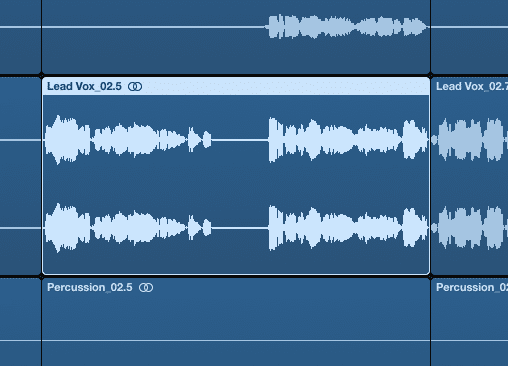
2. Cleaning up any improper fades or rough cuts
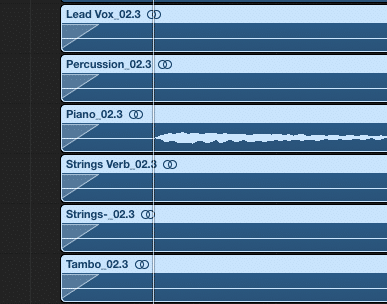
3. Clip gaining sections of a track for a leveled and balanced volume throughout
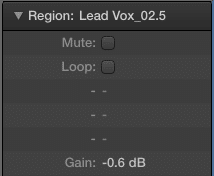
4. Tuning vocals if needed or desired
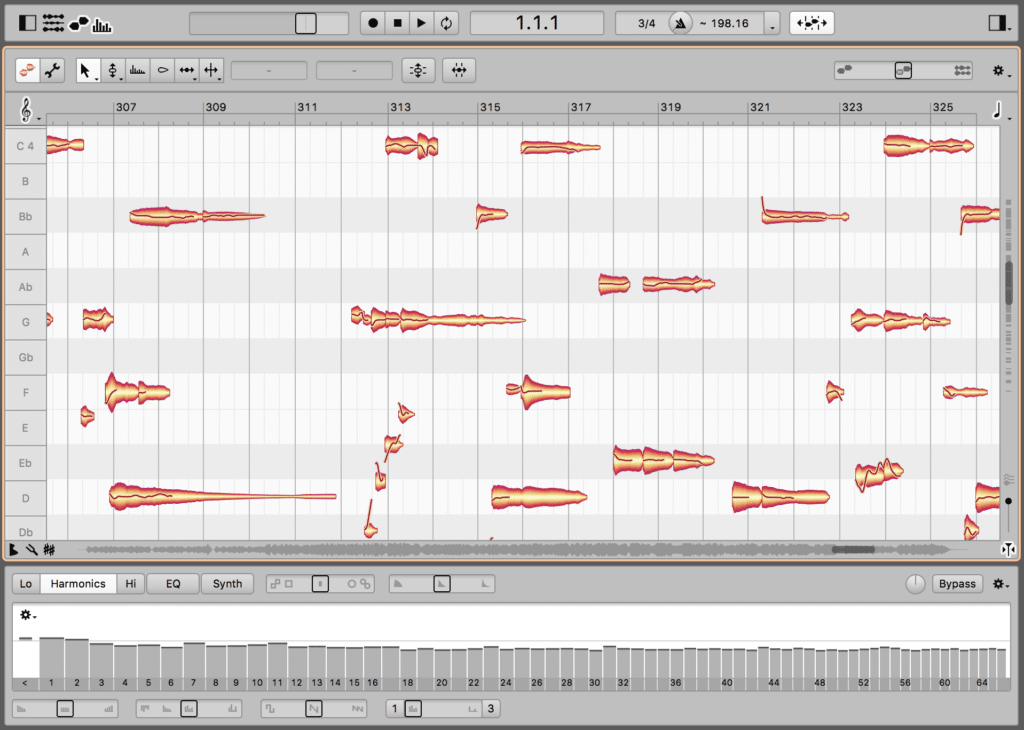
Sometimes the editing process can contribute to the songwriting, as this is sometimes when the decision to cut a track, or maybe have it drop out of a section is made.
Editing can be accomplished on your computer if you’re engineering the track, or it can be performed by an engineer.
Although this process is often overlooked today, it can be crucial to creating a great sounding final product. Recordings that are riddled with subpar takes, or clicks and pops, could have been fixed if the editing process was regarded with more importance.
If you intend to edit your tracks yourself, feel free to watch our video about one of the most important editing steps: Gain Staging. https://www.sageaudio.com/blog/pre-mastering-tips/clip-gain-automation-3-differences-you-need-to-know.php
Mixing:
Mixing is often considered the most creative part of the post production process. This is when the tracks recorded during tracking, and cleaned up during editing, are ready to be organized within a stereo field and further processed.
Once the mixing engineer has found a somewhat temporary place for the tracks within this field, more creative and preference based effects are implemented.
These forms of processing can be broken down into temporal processing, dynamics processing, and spectral processing.
Temporal Processing relates to time based effects such as reverb and delay.

Dynamics Processing relates to volume and dynamic effects such as compression.
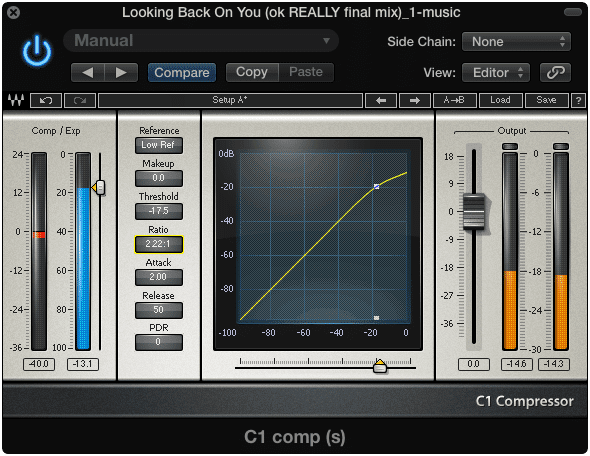
Spectral Processing relates to the frequency spectrum and how they fall into a stereo image.

All of these forms of processing are incredibly complex and take years if not decades of consistent experience to master.
If you’re up for the process of mixing your music yourself, prepare for a challenging but rewarding experience. It can definitely be difficult to separate yourself from your music and listen to it in the objective mindset needed.
But if you want to learn how to mix, and are determined to become proficient in the complicated and demanding art, now is a great time to do so. If you have the equipment needed to track your music, you most likely have the means to mix it.
Of course complex mixing and processing requires a significant amount of CPU, so if you do intend to mix music, you must have a computer that can handle it.
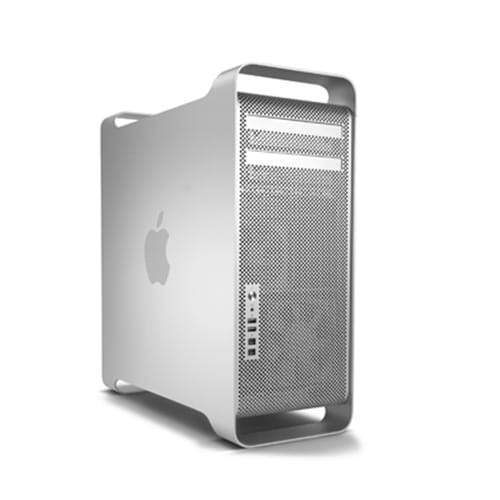
If you’d like to learn more about the mixing process, check out some of our mixing blogs and videos, with tips and techniques ranging from beginner to advanced: https://www.sageaudio.com/blog/mixing
Mastering:
Mastering is the last stage of post production prior to a song or record being distributed. A mastering engineer is responsible for bringing the track’s volume to acceptable levels, as well as balancing its tonality and frequency response.
Because mastering works solely with the mixed down stereo file, any minute change can greatly alter the sonic characteristics of the song. With that said, it’s incredibly important that mastering engineers work to refine their listening ability to determine what is best for a particular song.

Mastering typically involves compression, equalization, stereo imaging, and mild distortion. In the past it also included entering in the correct sequence and title information for distribution, but this responsibility has since shifted to the artist or label distributing the work.

One thing that is incredibly important to a mastering engineer is the medium with which the song with be distributed. Each medium requires different conditions that need to be met, in order for the song to sound as good as it can.
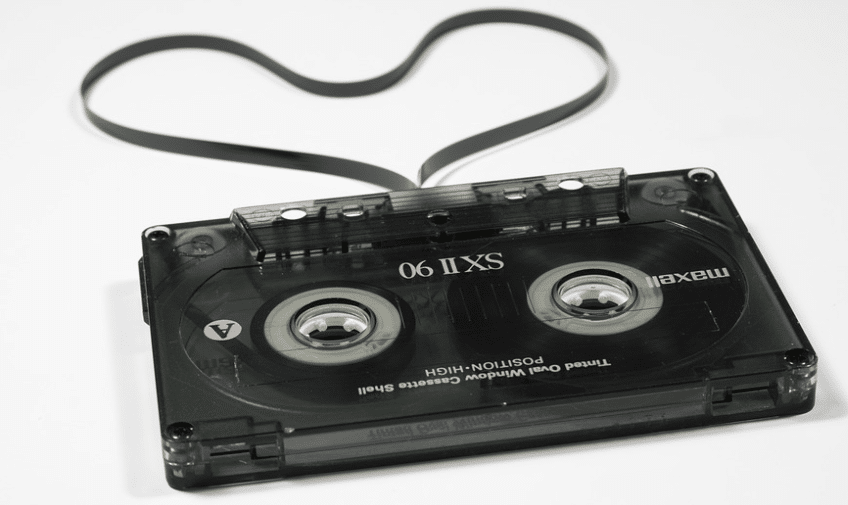
For the current most popular medium, digital streaming, this target can change based on the streaming service, and the devices listeners will stream the music through.

It can be argued that mastering is a blend between highly technical side of music production, and the creative and emotive side.
If you have the equipment needed for mixing, you most likely have what you need to digitally master. Although this should typically be reserved for a seasoned mastering engineer, you should certain try to master your music if you’re curious about the process.
If so, check out some of these blogs and videos about mastering, to learn more: https://www.sageaudio.com/blog/mastering
And if you’d like a free sample of your mix mastered, you can send it to us here: SageAudio.com/register.php
Distribution:
Today most distribution is digital. This is again, great for any independent artist.
The cost of distribution has been cut from a multi-thousand dollar endeavor to roughly $50 per album. And that’s of course if you want to get your songs on Spotify or Apple Music.

If you don’t mind going the nontraditional route, there are plenty of sites that offer free distribution while still touting an immense fanbase.
But if you are aiming to distribute to Spotify, and Apple Music here are some great options:
1. Songtradr
Songtradr offers unlimited distribution for $50 annually. They also have a community of content creators and fans looking to license songs for independent projects.
2. CD Baby
CD Baby is a reliable service that distributes albums for roughly $50 per album. They do however charge for an ISRC code, as well as consider a 2 song single an album, and will charge you likewise.
3. Amuse
Amuse is a great option for independent distribution. Not only will your song be placed on Spotify, Apple Music and other prominent stores,Amuse is completely free . That includes the ISRC code.
Furthermore, if your song does well enough, Amuse will offer you a record deal, which you have the option to either accept or decline, with no strings attached.
The benefit of distributing your music to Spotify is the popularity of their playlists. If you sign up for “Spotify for Artists” you can submit your song to their editorial playlisters. If you get your track on one of their more popular playlists, your music will be exposed to thousands perhaps even hundreds of thousands of new listeners.
There are of course the free options for distribution. These include:
1. Bandcamp
2. Soundcloud
3. Youtube
Each service is follower based, and offers a unique group of listeners and potential fans.
Promotion:
This is another part of releasing music that used to cost far more than it does now. Of course you can still spend thousands on billboards, commercials, magazine ads and more.
But if you’ve taken the time to build up a respectable Instagram following, your promotion costs as much as your phone bill.

One thing that is important to note about modern promotion is what to avoid. Absolutely avoid paying for play-listing, streams, or followers.
If you try to purchase the illusion of having fans, or pay to be placed on a playlist you’re either paying for nothing, or your damaging your image. Both of which are terrible decisions you should definitely avoid.
The best course of action is to build a fanbase through social media, playing shows, and writing and releasing great songs people want to hear.
Another great option is SubmitHub . With this service you can send your music directly to playlisters and bloggers, establishing a legitimate relationship that can help expose your music to new fans.

Fan Reception:
This is possibly the most enjoyable aspect of releasing music - when all of your hard work, patience, and time spent is recognized by the people it affects the most.
Fan’s can make or break your release, as well as propel it into popular awareness. If you’re fortunate enough to have fans that deeply enjoy your music, make sure to foster that community.
Keep in mind that you can’t control how your work is perceived, and that the same song may have multiple meanings to different people.
Allow for covers, and renditions of your music, and make sure to interact with your listeners via social media.
Imagine what makes you a fan of other artists and then try to be that to your fans.
Conclusion:
Although the musical landscape may be more confusing than it used to be (since you can no longer depend on a label to do the majority of the work) I’m convinced that now is the best time in history to be an artist.
If you have the determination and know how, you can record, mix, master, distribute and promote your music successfully and for a fraction of the cost.
Of course, save money where you can - a great place to start is getting a free mastered sample of your track. This way you can skip the expense of shopping around for a good engineer: SageAudio.com/register.php
Are you planning a release soon?




